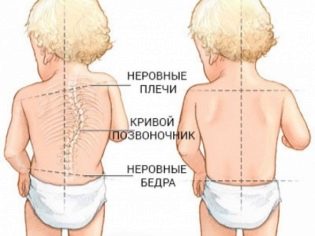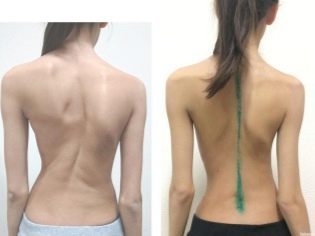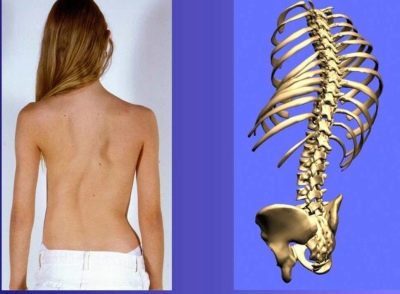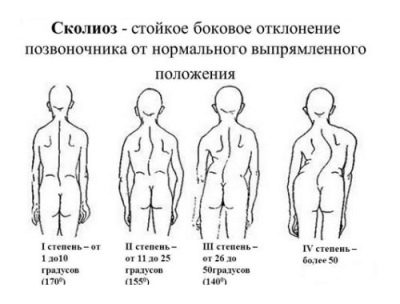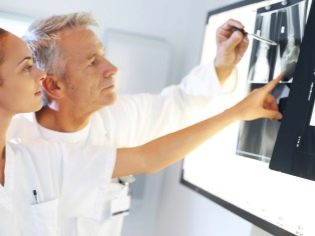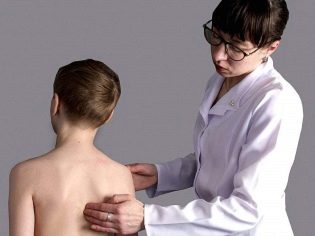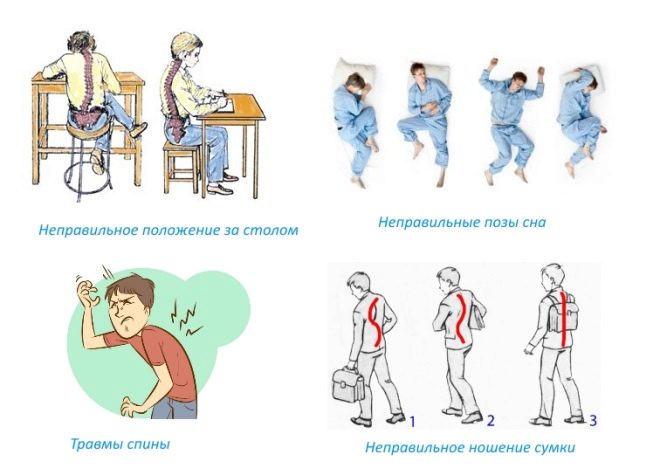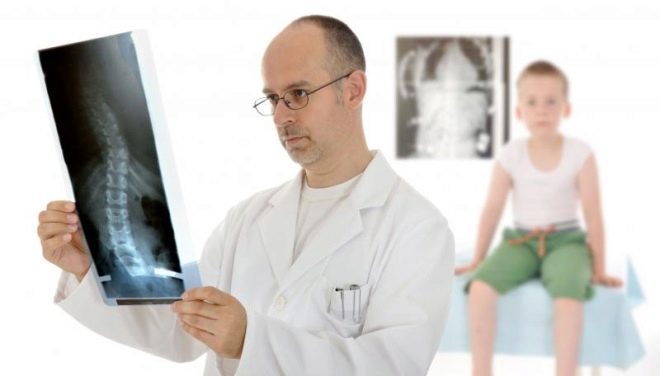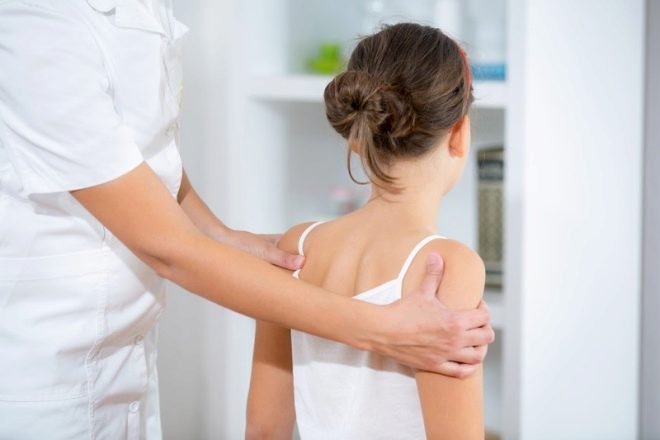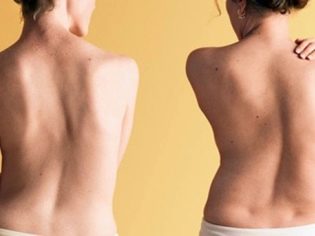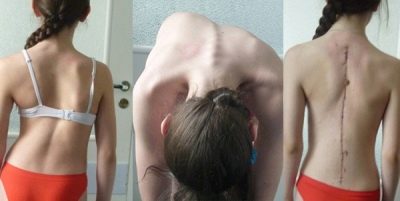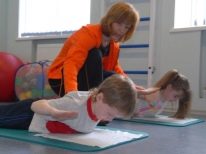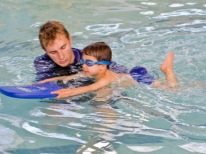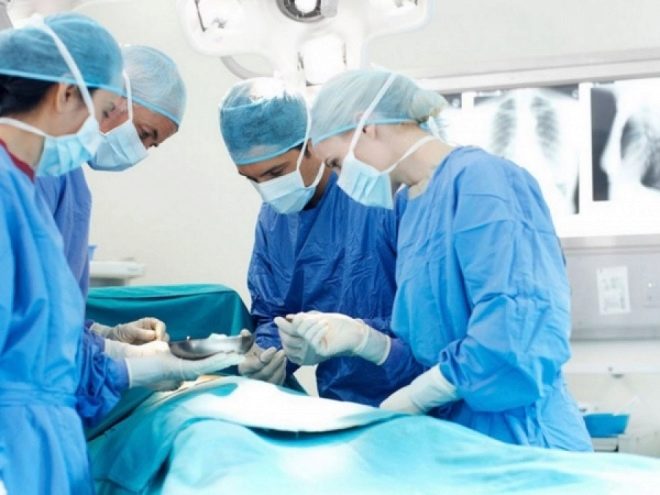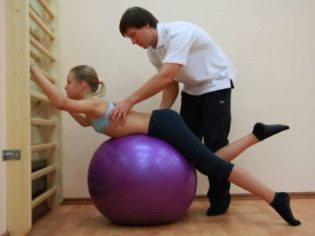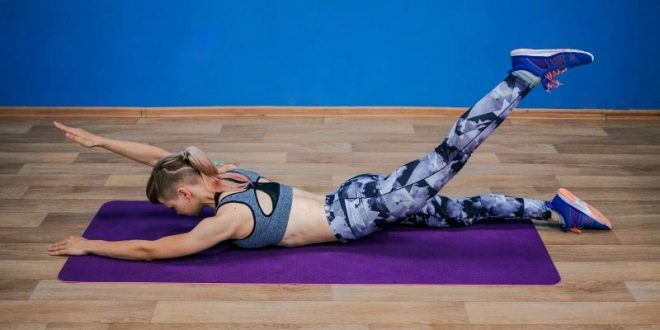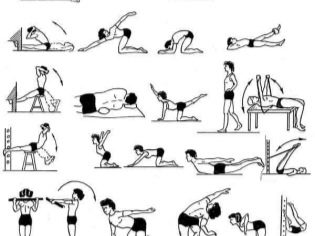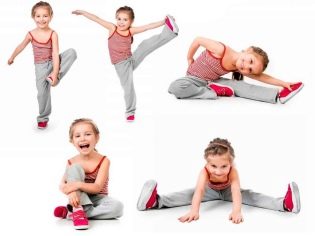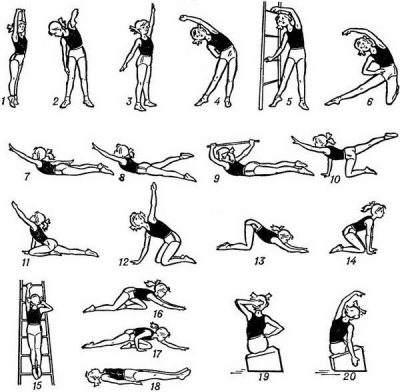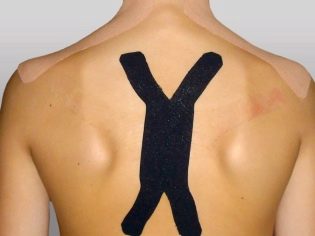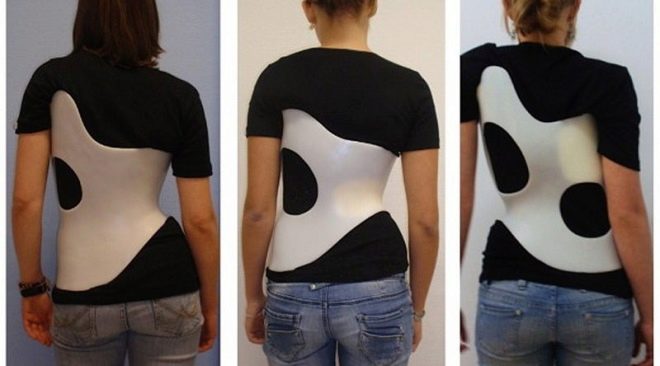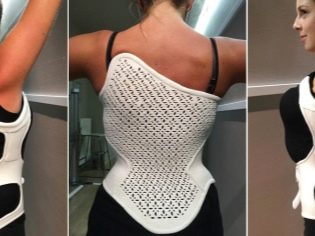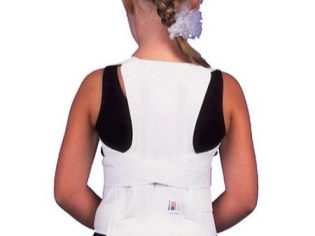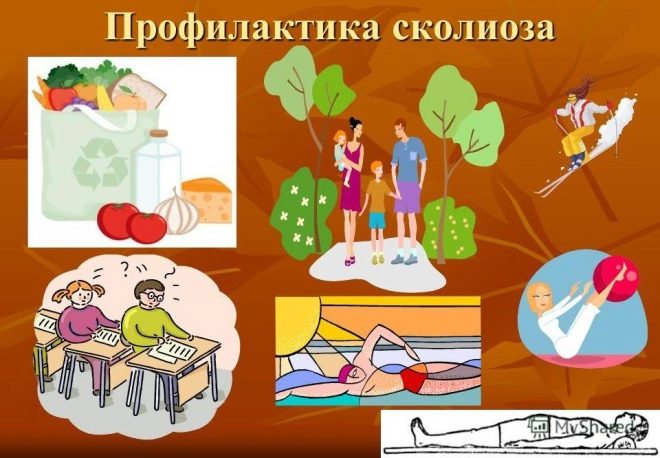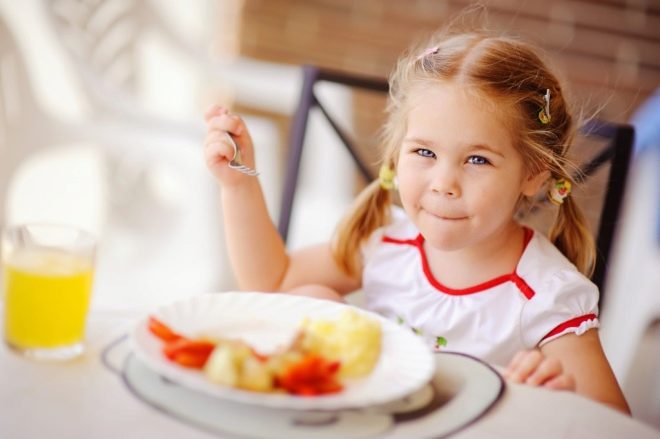Scoliosis in children: symptoms and treatment, effective exercise and prevention
Many parents are faced with curvature of the spine in a child. But it so happened that scoliosis is considered any deviations in the state of the spinal column. In fact, not every curvature can be considered scoliosis. Let's find out what scoliosis is, how it can be and how to cure it. We will tell about all this in this article.
What it is?
Scoliosis is a three-plane deformity of the spinal column. The disease got its name from the Greek word "σκολι? Σ", which translates as "curve". The disease in children can be congenital as well as acquired. Sometimes scoliosis develops as a consequence of trauma.
Not every frontal deviation of the spine from the vertical axis has the right to be called scoliosis. And the real scoliosis has the second name - “scoliosis”. It usually develops in children during the period of intensive growth (from 6 to 16 years), while most often scoliotic disease affects girls. In 9 small patients, there is usually only 1 male patient. The disease is classified as progressive, in other words, the condition of the spine as it grows steadily worsens.
True scoliosis is always accompanied not only by the frontal deviation of the position of the spine (bending), but also by torsion (twisting) of the vertebrae around the vertical axis. The vertebrae themselves can be modified, displaced relative to each other. In this case, the child has a pronounced asymmetry of the body - one shoulder is higher than the other, scapulas are located at different heights, etc.
When scoliosis occurs, changes in the paravertebral tissue of the vertebrae, due to which they change their position, sometimes causing disruption of the work of many organs and systems. Severe forms of the disease can lead to disability.
According to statistics from the Ministry of Health, in Russia today from 10 to 15% of children suffer from scoliosis. Most often, the disease is diagnosed in children of school age. But there are also so-called infantile scoliosis (in children under three years old), juvenile scoliosis (in children from 3 to 10 years old), and juvenile scoliosis (in children over 10 years old).
Types and classification
The age at which the pathology is found is of great importance for determining the type of disease and determining the methods of its treatment. But, apart from age, the doctor necessarily assesses the shape and nature of the curvature. Scoliosis on this basis is divided into:
- C-shaped (there is one arc of curvature, while the back of the child resembles the Latin letter C);
- S-shaped (like this Latin letter, the spine has two arcs of curvature);
- Z-shaped (rather complex shape with three arcs of curvature).
In Russia, an orthopedist establishes a diagnosis based on the results of a radiographic examination. The angle and type of curvature is estimated, and therefore there is a more comprehensive classification system that is widely known to all parents.
- Scoliosis of 1 degree - this is a curvature at which the lateral curvature angle does not exceed 10 degrees, and the vertebrae twist (torsion) is very slight.
- Scoliosis 2 degrees - about this form of disease speak in the event that the angle of the lateral curvature of more than 10 degrees, but not more than 25 degrees. At the key point of curvature, the vertebrae are usually deformed.
- Scoliosis 3 degrees - lateral curvature is 25-50 degrees, the deformity of the vertebrae is significant, there are also multiple changes in the spine.
- Grade 4 scoliosis - lateral curvature exceeds 50 degrees. The spinal column is severely deformed, there are multiple displacements of the vertebrae relative to each other, the rib cage and the ribs are also subjected to pinching and deformation.
Such scoliosis is very dangerous, because with it the internal organs are displaced and compressed, they change their position, their functions are violated.
The part of the spinal column, in which the main arc of curvature is observed, makes it possible to specify the type of disease. So, scoliosis can be upper chest or thoracic, thoracolumbar. Often there is a curvature of the lumbar spine, at least - lumbosacral. The most difficult is combined scoliosis, in which several spinal sections are affected at once.
If the spinal column is changed only in the thoracic region, it is also called thoracic, if in the lumbar region it is lumbar, and in the thoracolumbar region it is thoracolumbar.
Diagnostics usually does not cause difficulties, it is quite enough for a pediatric orthopedist to see an X-ray image, to visually evaluate a scoliotic posture, to tell parents with great accuracy which type and type of disease he has discovered.
Causes
Causes of congenital scoliosis in children are abnormalities of the development of the vertebrae, formed during the period of intrauterine development. In the crumbs during the period of mom's pregnancy, wedge-shaped vertebrae or semi-vertebrae could form under the influence of various adverse factors. In both cases, the vertebral column cannot grow unmodified. Sometimes the cause of the pathology lies in congenital dysplasia of some parts of the spine, most often the lumbosacral. Congenital scoliosis is an infrequent phenomenon in itself, most diagnoses are of an acquired nature.
Since childhood, we ourselves have often heard that we need to sit straight so that the spine does not twist. Poor posture is, indeed, a fairly common cause of scoliosis, but not the only one. It is believed that predisposing factors to the development of the disease are a violation of general mobility, hypodynamia, excess weight in a child, and the lack of a good habit to keep your back straight, that is, to keep your posture.
Scoliosis can lead to problems with the nervous system, in which neuromuscular signals and connections, metabolic disorders, tumors and injuries are disturbed.
Early childhood scoliosis can occur in children who have suffered birth injuries, congenital dislocation of the hip, as well as in children who have a shortened lower limb from birth.
Transferred poliomyelitis, infantile cerebral palsy, spinal cord injuries and weak muscles from birth can affect the development of the disease.
Scoliosis can be caused by numerous genetic diseases (for example, Marfan syndrome), previous vertebral fractures and multiple burns of the skin. In adolescence, scoliosis often provokes osteochondrosis or rheumatoid arthritis.
Whatever the cause of the disease, the mechanism of development is approximately the same - pathological changes occur during the period of active growth of bone tissue. Therefore, the most dangerous age is from 6 years to 14-15 years. This does not mean that the disease is not detected in children after 15 years, but such cases are relatively rare.
Parents who are looking for the answer to the question why the child has scoliosis, it is difficult to answer unequivocally, because modern medicine knows no more than 20% of the reasons. In 80% of cases of childhood scoliosis, the cause cannot be established, alas, and therefore it is considered idiopathic.
Symptoms and signs
About congenital scoliosis becomes known during the first year of a child's life, sometimes in the second year. But the acquired scoliosis is quite cunning, it is not so easy to consider. Symptoms of idiopathic disease, which has no apparent reason, are most often found in the preschool years, at 5-6 years old, when the child begins to undergo a medical commission for registration in school.
It is at this age that the child experiences the first rapid release of growth hormone, begins active growth and lengthening of the bones. The jump in growth, which many parents go unnoticed, is accompanied by a serious vertical load on the spine.
The specific symptoms depend on the degree of scoliosis.
- At the first degree the child slouches slightly, in a relaxed state, his shoulders are lowered, his head is slightly tilted down, the waist and shoulder girdle are somewhat asymmetric.
- At the second degree the symptoms will be about the same, but in the chest on the side where the curvature occurred, a slight protrusion may appear, and in the lumbar region - a muscle "roller".
- Third degree scoliosis it's hard not to notice - the ribs begin to bulge, the curvature of the back is visible to the naked eye and obviously not only for the doctor. Observed rib hump, muscle clamps of the limbs. The child's press is very weak.
- In the fourth degree the symptoms are even more severe, the movement often causes pain to the child, the muscles in the area of the curvature "sink."
If you evaluate the child visually and rely on his complaints, then at the first stage there are practically no complaints, the shoulders are approximately at the same level, the stoop is inconspicuous. In the second degree, the shoulders become clearly asymmetrical, the pelvis is cut. Starting from the second stage, the child gets more tired when playing in an upright position, complains of pain in the back. Quite often, scoliosis is combined in children with such a violation of the musculoskeletal system as flatfoot.
Danger
Scoliosis, discovered at an early stage, has all the chances for successful treatment and rehabilitation, after which the child will live quite normally, without recalling the unpleasant diagnosis. But from the second degree of scoliosis increases the likelihood of negative consequences for the child's body.
The younger the child at the time of detection of the disease, the less favorable are the forecasts, because he still has to grow and grow, respectively, and pathological changes will be exacerbated. In the worst case, scoliosis leads to disability associated with significant spinal curvature, vertebral deformity, clamping and displacement of the normal position of the internal organs.
When scoliosis of 3 degrees is started, a hump begins to grow, which, alas, is very, very difficult to get rid of.
A deformed sternum in a child with scoliosis is fraught with problems with the work of the heart and lungs. The lung volume decreases, the child receives less oxygen, chronic hypoxia of the brain and internal organs develops, development slows down, many body functions begin to suffer.
Any scoliosis, regardless of the degree, changes the child’s posture and gait. With the progression of the changes are becoming more pronounced. Displacement of the pelvis with scoliosis can lead to disruption of the pelvic organs in the future.
Adolescents with scoliosis often experience a sense of inferiority, develop deep psychological complexes. Poor posture and gait become a real problem for girls, because they find it difficult to hold their back and walk on their heels.
Boys may face another problem - they will not be able to choose a military career for themselves, and even urgent military service will be in question, they will not be able to serve in the police, the FSB, learn professions that require good physical health, or practice their favorite sport.
If the child is not treated, thoracic scoliosis may well lead to the development of chronic respiratory failure, and lateral compression of the chest can lead to the development of heart pathologies. More serious consequences are fraught with distortion in the lumbar spine. The most dangerous can be paralysis of the lower body, which can occur due to pinching of the spinal nerves and spinal cord with displaced and deformed vertebrae.
Approximately half of patients with fourth degree of risk of complete disability are estimated at 60% or more. Today, there are many ways and means of correction, which, with timely therapy, will help to avoid negative consequences.
Treatment
Pathology correction begins from the moment of its detection. In this case, the doctor will closely monitor the child to establish whether scoliosis progresses or not. In case of non-progressive scoliosis of the first and second degrees, conservative treatment with the use of massage, exercise therapy, and special therapeutic gymnastics is indicated. These children will have to sleep on a hard surface, on the so-called “shield”.
It is useful at this stage to give the child to the swimming section. This sport helps to strengthen the muscles of the back, which will help to correct the curvature without serious consequences for health.
Parents will have to purchase a special orthopedic corset for the child, which will help the little patient to always maintain a smooth and correct posture.
If the first or second degree scoliosis progresses, physiotherapy, such as magnetic therapy, electrical stimulation, hydrotherapy, mud therapy, and lightweight techniques for manual spinal manipulation are added to physical therapy, a set of gymnastic exercises, back massage and other methods. Wearing a corset, which is simply desirable with a non-progressive disease, with progressive disease is mandatory.
If the treatment does not help, scoliosis progresses too quickly, the angle of curvature has already reached more than 40 degrees or there are pathological changes on the part of some internal organs, and the child is undergoing surgical treatment.
The best age for the operation is considered to be in the range of 10-14 years, it is during this period that the growth rate of bone tissue becomes more uniform, which means that you can achieve the best results.
The essence of the operation, if in brief, is reduced to the implantation of special distractors and other holding elements in the spine. Before this occurs spinal traction. In addition, doctors can perform several types of osteoplastic operations that will require a long rehabilitation process.
The decision on the need for surgery is not hasty, doctors always have time to watch and resort to surgery only if it is not possible to help the child by other means. However, most children can cure the spine with conservative measures. About this treatment and should be discussed in more detail, because it is long and falls largely on the shoulders of parents. Let's take a look at the basics of scoliosis treatment at home.
Therapeutic breathing exercises
The word exercise therapy, of course, means the individual purpose of the exercises, taking into account the degree of the disease and the angle of curvature. But in all cases, the approach of the so-called anti-scoliotic gymnastics from Schroth, known all over the world, is applied in parallel. She is named for Katharina Schroth, and in the people the method is often referred to as simply meal therapy.
The essence of the method is the use of asymmetric breathing. We already know that a child who has a curvature breathes unevenly. From the side of the curvature, the lung volume is somewhat reduced. The task of the doctor at the initial stage of treatment is to show the child and parents the correct position of the body.He creates it when the child is lying on the floor, using various devices - poles, balls, pads. After that, the child breathes deeply, trying to fill the lungs and “stretch” the ribs. Gradually, the correct position of the body becomes habitual, and the child will learn to accept it without the doctor and his devices.
Meal therapy actually “forces” the body to “remember” the correct state of the work of the musculoskeletal system and return to it. The process is a long, consistent, quick result should not be expected, but with perseverance it will be necessary.
Simultaneously with the respiratory technique of Katharina Schroth, it is recommended to wear an orthopedic corset, as well as undergo physical therapy courses and massage. In childhood, shrot therapy is recommended in courses, no more than 1-2 times a year. This is good news, but there is also bad, because with this technique only physiotherapists of a very high category work, and such specialists are not in every children's hospital or clinic. It is possible that parents will have to find such a specialist in a neighboring city or region and travel there 1-2 times a year to undergo a medical meal-course.
Gymnastics at home
For homework, the orthopedic surgeon must necessarily prepare for parents a reminder of which loads and in what quantity can be allowed for this child, taking into account his individual angle of the spine deviation from the norm. Based on this, a list of effective exercises is drawn up that can be done at home, replacing the usual morning exercises and evening warm-ups.
Usually in the gym complex includes several groups of exercises. The basis of all - fortifying exercises that are aimed at developing the muscles of the back.
The second group of exercises is aimed at eliminating the torsion position of the vertebrae, it is called detorsion gymnastics. It includes exercises that will train the thoracic and lumbar spine.
The third group of exercises is aimed at establishing the lost symmetry. It is called symmetrical training. The essence comes down to the distribution of muscular load on the right and left side of the back in the same volume. This makes it possible to compensate for the curvature and gradually "straighten" it.
The most difficult group is asymmetric. It is directed solely at one part of the spine, which suffers most from scoliosis. This part of the gym must be shown by an expert.
Classes with a child will require great organization from all households. Gymnastics is recommended to do at least two times a day, each lesson should last at least 20-40 minutes. Begin with five minutes, gradually increasing the time of classes and the number of loads.
If classes are held at home, the child needs to install a large mirror, as is the case in exercise therapy rooms, so it will be easier for him to independently control the position of his body in space.
At home it is recommended to deal only with children with the first degree of illness. If you find a second degree, it is desirable to conduct classes under the supervision of a specialist physiotherapist. And only when the whole complex will be well known to both the mother and the child, the doctor may be allowed to conduct classes at home.
The basic exercises are well known to everyone crawling on all fours, bending the body to the right and left, rotation of the body in the lower back in a circle, hanging on the crossbar on the hands, strengthening the press.
For home exercises, you can use exercises with a stick, a large gym ball, fitball exercises are especially useful for children from 7 to 10 years old, during the period of intensive growth of bone tissue.
Taping
Cotton tapes with a special acrylic coating sensitive to body temperature are used for kinesiotiping. In fact, tapes resemble human skin.Tapes are called tapes, hence the name of the method.
Tapes are superimposed on certain muscle groups and individual muscles, but they do not hinder the child’s movements, but, on the contrary, strengthen the motor potential. Tapes support the muscles where they are weakened, and relax where they are tense. Gradually, the muscular skeleton returns to normal, better keeps the back, the spine begins to straighten.
Impose tapes correctly, taking into account the individual characteristics of the disease can orthopedic surgeon or manual therapist. After a few days, tapes are replaced with new ones. The tension of the tape is almost identical to the tension of the skin, which allows the recovery process to proceed as smoothly and naturally as possible.
Parents can use tapes to control the child’s posture, because he spends most of the day at school, where mom and dad can’t observe his landing and posture. To do this, two strips of tapes fasten crosswise on the back through both shoulder blades. As a result, even if the child tries to slouch, he will not be able to physically succeed it, since the tapes will firmly hold the skin taut, and the back will be straight.
Corsets
The simultaneous use of these orthopedic appliances with general purposes (massage, taping, gymnastics and physiotherapy) allows us to achieve more impressive and faster results. In the opinion of parents who immediately dressed the child in a corset, it took no more than six months to correct the posture and eliminate the manifestations of first-degree scoliosis. The second degree had to be corrected longer, but this usually works fine.
Which corset to choose, exactly answer your attending orthopedic surgeon. He will also write out appointments for specialists in an orthopedic salon, in order to select a model for the child that will correct the existing shortcomings.
There are several types of corsets.
- Supportive shown in the first degree of scoliosis, both with stable and with progressive.
- Corrective corsets can not be worn all day, they are intended for treatment and not for permanent exposure, children are usually advised to wear them for 30–90 minutes a day.
- Corsets are soft, representing the wide fabric fixing tape, semi-solid and solid.
- They are standard and custom made. The exact model is recommended by a doctor.
Massage
Massage has two goals - on the one hand, you need to relax the muscles, which are due to curvature in constant tension, and on the other hand, you need to improve the tone of those muscles that are weakened. Accurately and targeted to make therapeutic massage can only an experienced certified medical professional. The direction to the therapeutic massage will be given by the orthopedist. But in the intervals between treatment courses, the mother can easily make a light massage at home for the child herself.
It uses back and chest strokes, kneading and vibrating tapping on the chest, ribs and back. If we recall everyone familiar from childhood "Rails, rails, sleepers, sleepers ...", then in fact it will be a normal, full-fledged massage for scoliosis.
Before applying home massage consult your doctor. He will tell you some of the nuances of the back of your child, so that the benefits of home massage are greater.
It is noticed that home massage helps sometimes better than a doctor, because at home the child is in a relaxed state, he is in a familiar environment, the hands of his mother or father for him are synonymous with peace and security. In the doctor's office there are muscle clamps, which in fact do not exist, but which are the result of the stress of a visit to the doctor.
Prevention
As soon as the baby was born, parents should consciously engage in the prevention of such an unpleasant disease as scoliosis.When the child is one year old, it is advisable to consult with a surgeon who will tell you if the child has signs of congenital scoliosis or curvature as a result of birth injuries. Usually, if there is a disease, it becomes obvious even before the child reaches the age of one.
From a very early age, a child needs to inculcate a love for gymnastics and exercise. Instead of a computer, it is better for him to donate a wall bar, and instead of a tablet, a gym ball or an annual subscription to the pool. It is clear that it is impossible to protect the child from all existing gadgets in our time, but at least it is necessary to make sure that the child does not sit at the computer for a long time - he does not notice the video games for his fit and stops controlling his posture.
In addition to the curvature of the posture, the child at the computer snaps with a mouse, which means that it strains one of the upper limbs more strongly. The muscles that support the vertebrae, respectively, are more involved on one side.
Change the game mode and activities of the child more often - 30 minutes at the computer should be more than compensated for by an hour and a half walk, games in the fresh air with a ball, and easy running.
Properly organize the workplace of the child in the house - make sure that the table at which he writes, reads, draws, is not too low or too high for his son or daughter, the chair is comfortable and has a wide back.
Do not allow sharp jumps of a child from a great height to hard surfaces, especially during the period of intensive growth of the spine (after 5 years), stop games in which the child may get injured in the spine and spinal cord. Teach your child to dive properly, do not allow it to do in unfamiliar reservoirs where the depth may be too shallow.
For normal growth of bone tissue, the child should have a normal balanced diet with a predominance of protein foods. Separately, make sure that your baby has enough calcium. It is necessary for the growth of bones, including vertebrae. Provide your child with dairy products, cottage cheese, eggs, fish, nuts and fresh herbs in sufficient quantities.
If necessary, consult a pediatrician and get an appointment for a particular calcium drug for a child. During periods of growth (in elementary school age and adolescence), give your child the daily dose of calcium he needs.
While walking with a small child, make sure that he holds your hand in different hands alternately with his right and left. If the child gets used to stomping only to the right or to your left, the muscles on the side of the raised handle will develop differently from the muscles of the other side, which may well lead to the development of scoliosis.
Exercises for children with scoliosis, see the following video.


